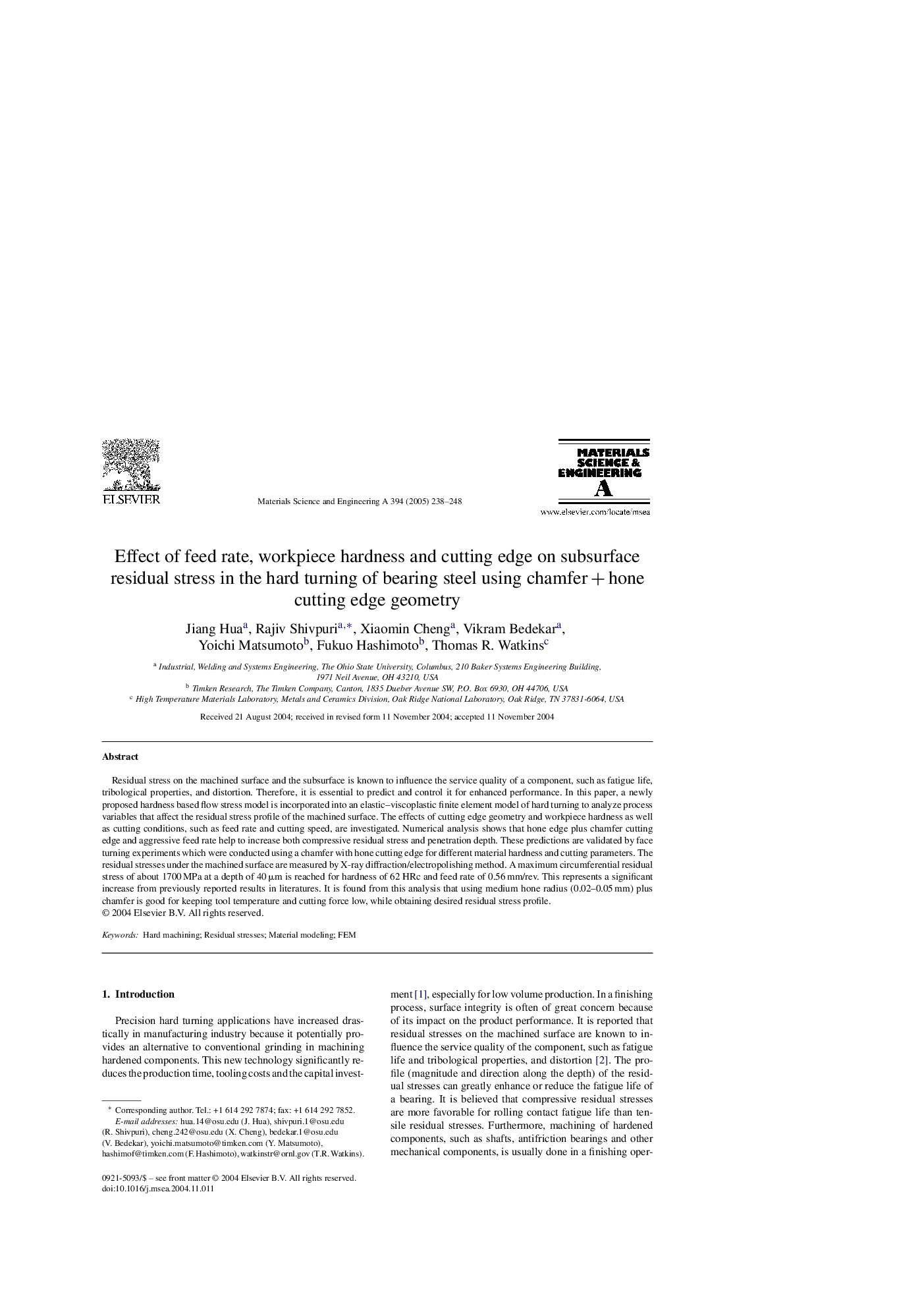| Article ID | Journal | Published Year | Pages | File Type |
|---|---|---|---|---|
| 9796450 | Materials Science and Engineering: A | 2005 | 11 Pages |
Abstract
Residual stress on the machined surface and the subsurface is known to influence the service quality of a component, such as fatigue life, tribological properties, and distortion. Therefore, it is essential to predict and control it for enhanced performance. In this paper, a newly proposed hardness based flow stress model is incorporated into an elastic-viscoplastic finite element model of hard turning to analyze process variables that affect the residual stress profile of the machined surface. The effects of cutting edge geometry and workpiece hardness as well as cutting conditions, such as feed rate and cutting speed, are investigated. Numerical analysis shows that hone edge plus chamfer cutting edge and aggressive feed rate help to increase both compressive residual stress and penetration depth. These predictions are validated by face turning experiments which were conducted using a chamfer with hone cutting edge for different material hardness and cutting parameters. The residual stresses under the machined surface are measured by X-ray diffraction/electropolishing method. A maximum circumferential residual stress of about 1700 MPa at a depth of 40 μm is reached for hardness of 62 HRc and feed rate of 0.56 mm/rev. This represents a significant increase from previously reported results in literatures. It is found from this analysis that using medium hone radius (0.02-0.05 mm) plus chamfer is good for keeping tool temperature and cutting force low, while obtaining desired residual stress profile.
Related Topics
Physical Sciences and Engineering
Materials Science
Materials Science (General)
Authors
Jiang Hua, Rajiv Shivpuri, Xiaomin Cheng, Vikram Bedekar, Yoichi Matsumoto, Fukuo Hashimoto, Thomas R. Watkins,
